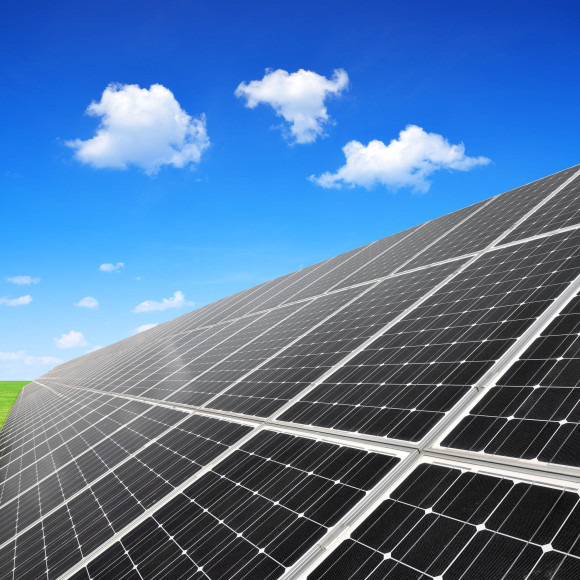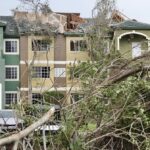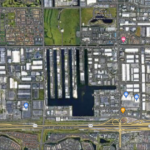Demand isn’t an issue for the solar industry.
The challenges lie with fulfilling demand with more skilled labor, more technology, and more sites.
While the Inflation Reduction Act (IRA), a freeze of potential tariffs, and more robust supply chains have helped the market grow, extreme weather events and a lack of skilled labor present challenges as the solar industry evolves to meet IRA’s decarbonization targets, according to kWh Analytics’ 2023 Solar Risk Assessment Report.
The report highlights solar resilience issues and offers detailed research on top risks to help insurers overcome market hurdles and expand lines of business.
The solar industry is forecasted to build as much in the next five years as in the prior 20 years combined. According to SEIA and Wood Mackenzie data, each of the last six quarters set a new record for residential solar installations, with over 40% growth in installed megawatts between 2021 and 2022.
“Managing solar asset risk requires a concerted industry effort to ensure sustainable growth and investment,” said Jason Kaminsky, CEO at kWh Analytics, a provider of climate insurance. “It is in our collective interest to address the evolving risks identified in the report and to collaborate on solutions. By doing so, we can ensure the long-term success and sustainability of the solar industry.”
Extreme Weather
Extreme weather is a top concern, especially the severe damage caused by hailstorms. For example, in 2019, the Midway Solar farm in West Texas suffered over $70 million in hail damage to more than 400,000 panels from a single storm. As more solar sites are built in the central U.S., and solar modules become larger and use thinner glass, the challenge of preventing hail damage becomes more significant.
Several methods of hailstorm mitigation are being explored, including preemptive hail stow, which minimizes hail impact; using tempered glass; and using modules built with backsheets (glass//backsheet), which are less prone to breakage than glass-backed (glass//glass) modules.
Financial Modeling
Factors such as global inflation and high energy prices created a high-cost environment for solar development in the U.S. in 2022, but prices are expected to decline in 2023 as pandemic-related supply chain disruptions, logistic costs and commodity prices level off. Commercial and residential system cost is expected to decrease by 3% in 2023, thanks to lower module cost and improved module technology that provides overall system cost savings.
However, costs for utility-scale projects coming online in 2023 will increase by 6% for an average 100 MWdc system because their modules have a 1-year lag in procurement and were purchased in 2022.
Labor costs have increased by up to 10% since 2022, impacting total system costs. Wage and apprenticeship requirements to qualify for Investment Tax Credit (ITC) may further drive-up labor costs. By extending the ITC at 30% for at least another decade, the IRA assures employees and employers that the solar industry is a financially sustainable and stable industry to enter.
Operational Risks
Operational risks run the gamut from equipment underperformance to a shortage of trained labor.
Overall, the solar industry is losing $2.5B annually from equipment underperformance. For example, in desert climates, inverter efficiency derating can result in up to 2% production loss beyond expected loss. Power loss due to anomalies, such as weather conditions or equipment failure, has increased 94% since 2019.
Large sites have seen the highest percentage increases affecting power production, with power loss increasing by 336% for 50-100MW sites, 243% for 200+ MW sites and 168% for 100-200MW sites. With solar assets consistently underperforming and competition driving down power purchase agreement (PPA) rates, power loss increases could impact future projects’ bankability. As solar installations become more complex, it will become even more imperative that asset owners and managers quickly resolve operational issues that could reduce financial returns.
But 44% of solar industry companies say the biggest operation issue is a lack of trained labor. A 2022 survey of installers showed that a lack of qualified labor was a more significant barrier to growth than customer acquisition. To help remedy the labor shortage, the IRA includes an apprentice program as one of the criteria for accessing the ITC. The IRA established that solar companies must proactively train the next generation of solar installers.
Industry-wide dedication to mitigating all of these risks and shortfalls will be critical to drawing investment and continued efficient, affordable solar industry growth and evolution.
Topics Risk Management
Was this article valuable?
Here are more articles you may enjoy.



 Severe Convective Storms Top Insured Natural Disaster Losses in H1: Swiss Re
Severe Convective Storms Top Insured Natural Disaster Losses in H1: Swiss Re  Divers Find 32 Cars Submerged in Lake Near Miami
Divers Find 32 Cars Submerged in Lake Near Miami  Liberty Mutual Posts Q2 Loss of $585M Driven By Catastrophes
Liberty Mutual Posts Q2 Loss of $585M Driven By Catastrophes  Kemper Exits Preferred Home and Auto Business Immediately
Kemper Exits Preferred Home and Auto Business Immediately 

